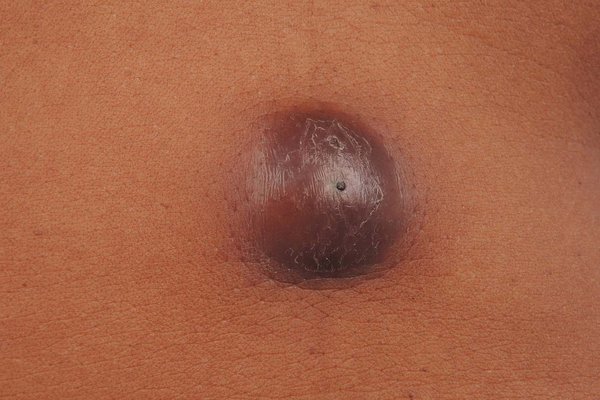💉 How to Treat a Giant Abscess
A giant abscess (a large collection of pus due to infection) is usually treated as a medical emergency, depending on the location and severity. Treatment typically includes:
1. Incision and Drainage (I&D)
-
Primary treatment for most large abscesses.
-
A healthcare provider will make a small cut in the skin to drain the pus.
-
The area may be irrigated with saline.
-
A wound packing might be placed to allow continued drainage.
2. Antibiotics
-
Often prescribed after drainage if:
-
The abscess is large.
-
There is cellulitis (spreading infection).
-
The patient has a weakened immune system.
-
-
Common antibiotics: Clindamycin, Bactrim (TMP-SMX), or doxycycline, depending on the suspected bacteria (especially if MRSA is a concern).
3. Culture and Sensitivity
-
Pus is often sent to a lab to identify the organism causing the infection.
-
Helps guide targeted antibiotic treatment.
4. Pain Management
-
NSAIDs (like ibuprofen) or acetaminophen are typically used.
5. Follow-Up Care
-
The area may need repacking daily for a few days.
-
Monitoring for signs of spreading infection is important.
🚨 When to Seek Emergency Care
Go to the ER or urgent care if:
-
The abscess is larger than 5 cm.
-
It’s on the face, neck, or near the spine or anus.
-
You have fever, chills, or feel very sick.
-
You have diabetes, are immunocompromised, or are unsure what it is.
🏥 Step-by-Step: How to Treat a Giant Abscess
1. Medical Assessment
-
A doctor evaluates the size, location, depth, and signs of systemic infection (fever, chills, elevated white blood cells).
-
Imaging (e.g., ultrasound, CT scan) may be needed to assess deeper or internal abscesses.
2. Incision and Drainage (I&D)
The cornerstone of abscess treatment.
-
Local anesthesia is given to numb the area.
-
A sterile incision is made to release the pus.
-
The abscess cavity is drained, flushed with saline, and sometimes packed with gauze or a drain (e.g., Penrose drain) to allow continued drainage.
-
Deep abscesses may require surgical drainage in the operating room.
3. Antibiotics
Antibiotics may be prescribed in addition to drainage if:
-
The abscess is large or deep.
-
There’s surrounding cellulitis or systemic infection (fever, malaise).
-
The patient is immunocompromised, diabetic, or has a prosthetic device.
-
MRSA (methicillin-resistant Staphylococcus aureus) is suspected.
Common antibiotic options (adjusted based on local resistance patterns and culture results):
-
Clindamycin
-
Trimethoprim-sulfamethoxazole (Bactrim)
-
Doxycycline
-
Augmentin (if anaerobes or mixed infection suspected)
4. Wound Care
-
The site is kept clean and dry.
-
Packing or drains are typically changed daily or every few days.
-
Complete healing may take 1–3 weeks, depending on the size.
5. Follow-Up
-
Patients are usually reassessed within 48–72 hours.
-
Follow-up is critical to:
-
Ensure the abscess is healing.
-
Repack or remove drains as needed.
-
Adjust antibiotics if culture results are back.
-
⚠️ When to Go to the Emergency Room
Seek immediate care if:
-
The abscess is on the face, spine, or genital area.
-
There’s rapid swelling, severe pain, or fever.
-
You have diabetes, HIV, are on chemotherapy, or have other immune issues.
-
There’s no improvement after drainage.
🧪 How to Identify or Diagnose a Large Abscess
1. Clinical History
Doctors start by asking about:
-
Pain: often throbbing and localized.
-
Swelling: rapidly growing lump.
-
Redness and warmth over the area.
-
Possible fever or chills.
-
History of trauma, injections, surgery, or immunocompromised state (e.g., diabetes, HIV).
-
Any discharge of pus.
2. Physical Exam
Typical signs of an abscess include:
| Finding | Description |
|---|---|
| Swelling (mass) | Firm or fluctuant (fluid-filled) area |
| Redness (erythema) | Overlying skin is inflamed |
| Warmth | Increased temperature over the area |
| Tenderness | Very painful to touch |
| Fluctuance | A soft, compressible feel suggesting fluid under the skin |
| Pus drainage | May occur spontaneously if the abscess ruptures |
⚠️ If the swelling is deep (e.g., under muscle, near organs), these signs might be less obvious.
3. Imaging (if needed)
Used when the abscess is large, deep, or in a sensitive location (e.g., neck, abdomen, pelvis):
🩻 Ultrasound
-
First-line imaging for soft tissue abscesses.
-
Differentiates between abscess (fluid) and solid mass or cellulitis.
-
Shows a hypoechoic (dark), fluid-filled cavity.
🧠 CT Scan
-
Used for deep or internal abscesses (e.g., abdominal, pelvic, spinal).
-
Helps assess extent and need for surgical drainage.
🧬 Lab Tests (if infection is suspected to be systemic)
-
Complete blood count (CBC): elevated white blood cells.
-
Blood cultures: if fever or sepsis is suspected.
-
Culture of drained pus: identifies the bacteria and guides antibiotic therapy.
📍 Common Locations of Large Abscesses
-
Skin and soft tissue (arms, legs, buttocks)
-
Perianal or rectal areas
-
Breast (lactational abscess)
-
Intra-abdominal or pelvic
-
Dental or orofacial
-
Spinal or paraspinal (rare but dangerous)
🚨 Signs an Abscess Might Be Dangerous
-
Fever, chills, rapid heart rate
-
Red streaks spreading from the area (lymphangitis)
-
Impaired movement or neurological symptoms
-
Located in face, neck, spine, or perineum
